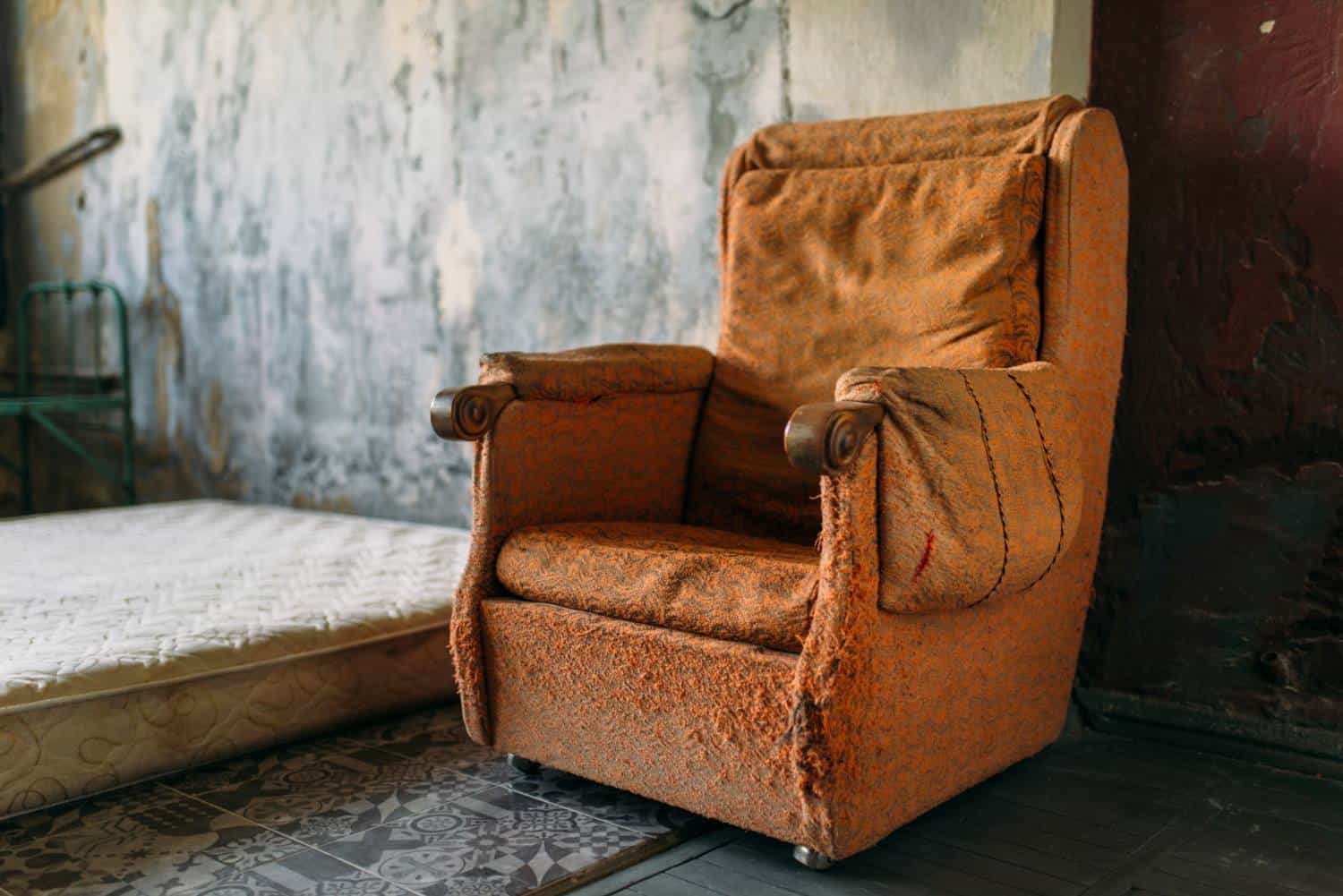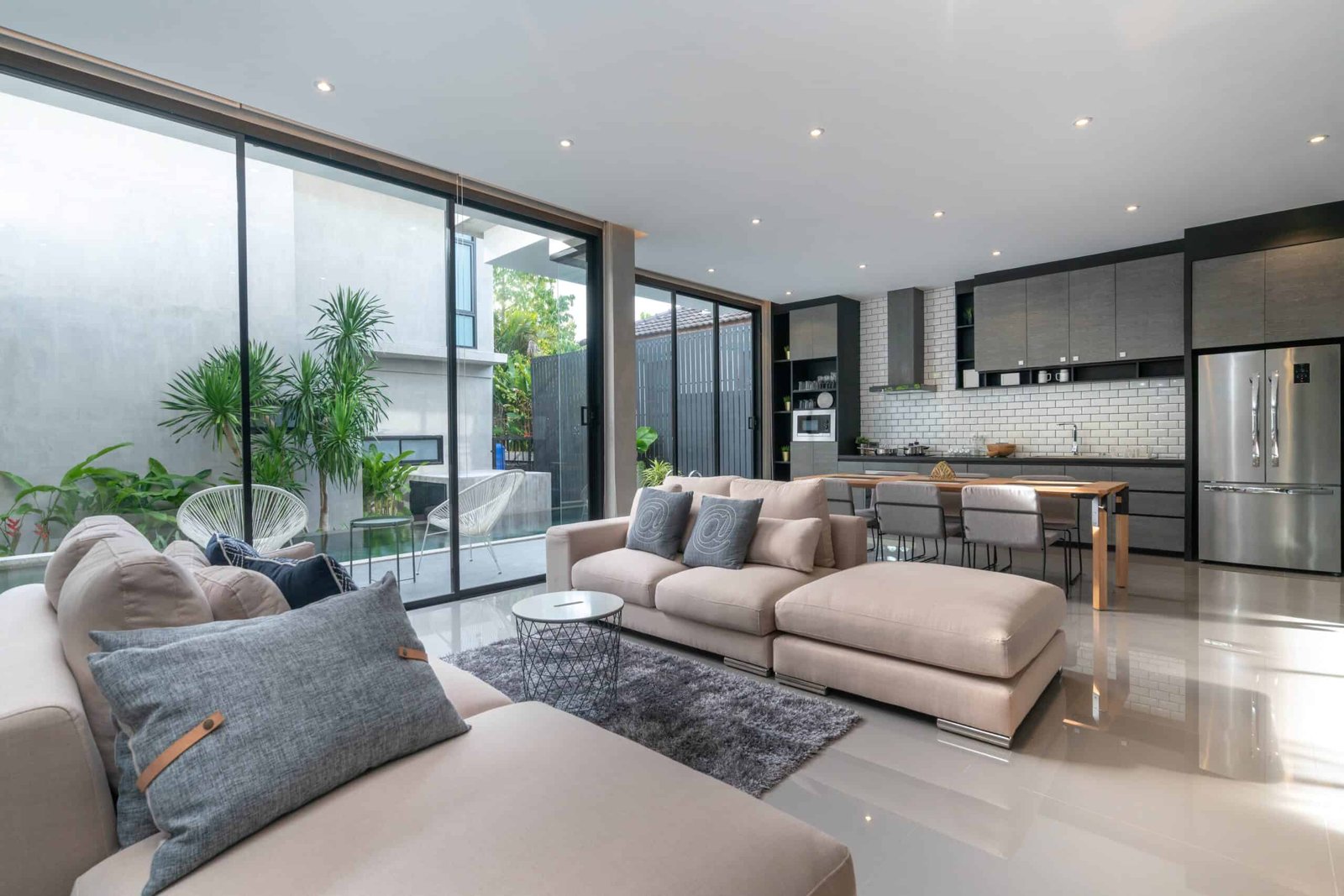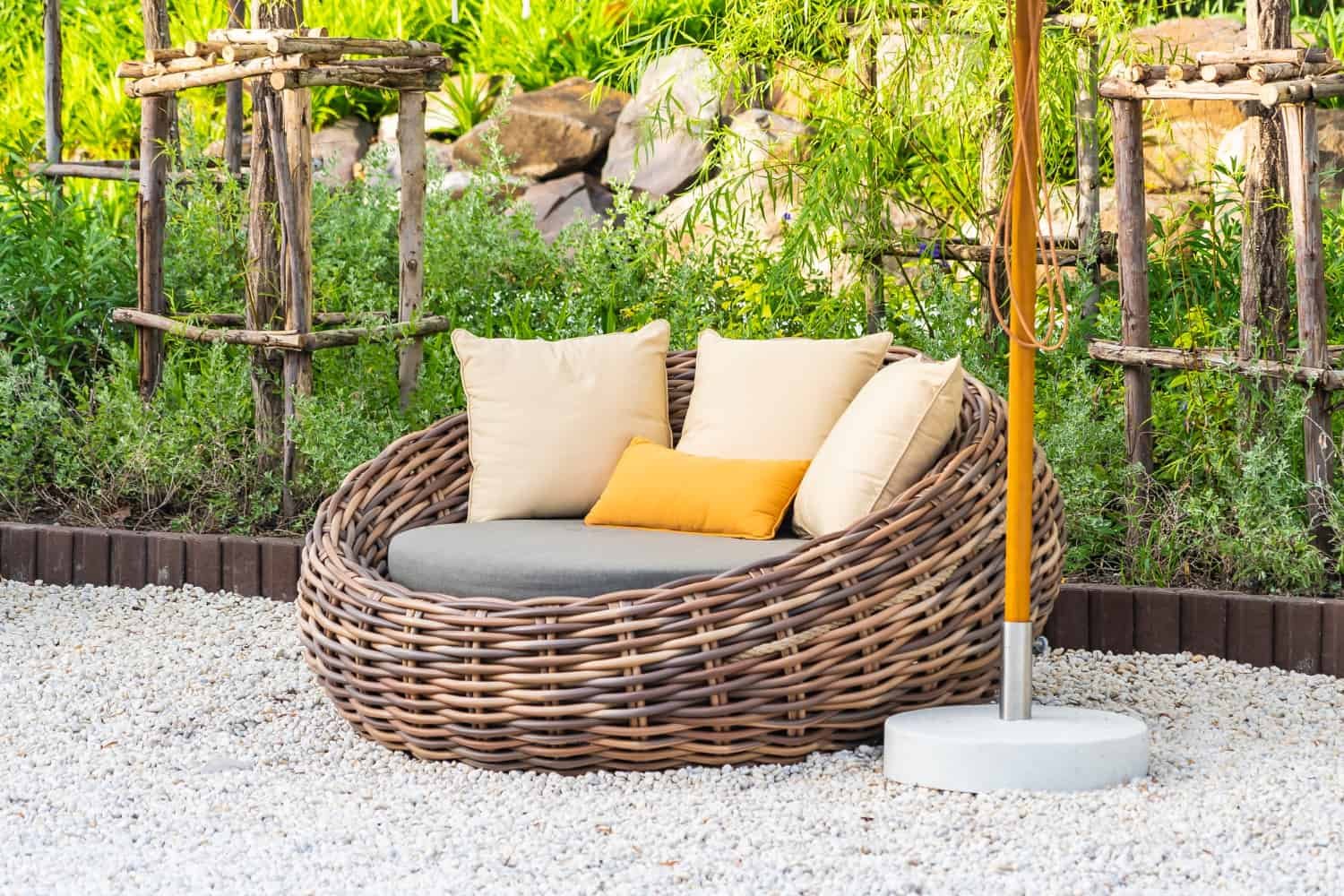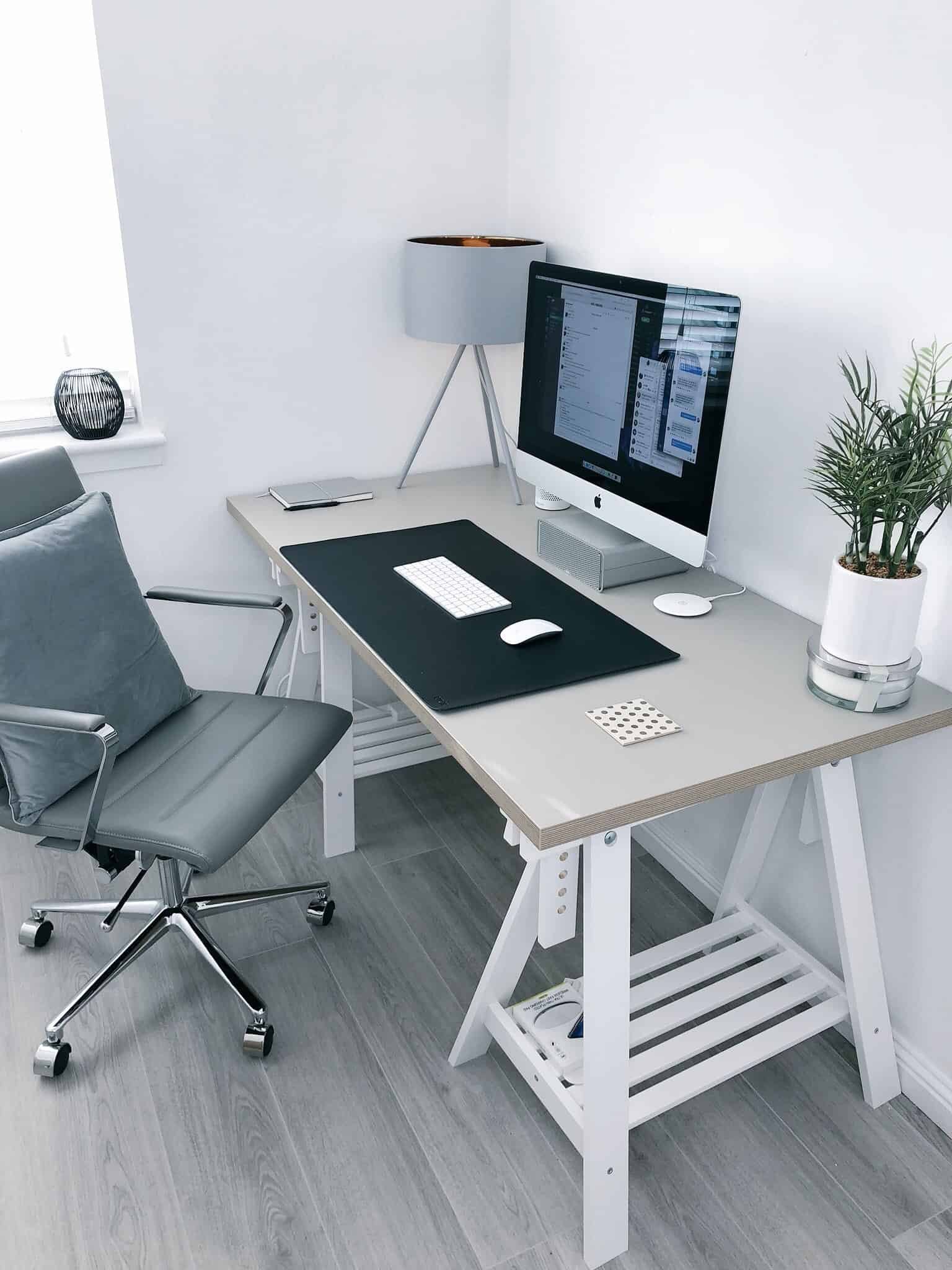
Disclaimer: As an Amazon Associate, “Furniture UK” earns from qualifying purchases.
Choosing Home Office Furniture: Key Considerations to Keep in Mind
Welcome to the new normal: working from home. With the rise of remote work, a comfortable home office has never been more important. And when it comes to creating the ultimate workspace, furniture is vital. The right furniture can make all the difference in your productivity and comfort, but with so many options, where do you start? Comfort and functionality are essential when selecting home office furniture. After all, you’ll be spending countless hours sitting at your desk. Ready to create the perfect home office?
Look for an adjustable chair with proper lumbar support, a desk with the right height, and ample space for your computer, paperwork, and other essentials. But let’s not forget about style. Your home office should be a space you love, so choose furniture that reflects your personality and inspires you to do your best work. However, remember this is a professional space, so avoid overly casual or unprofessional furniture. Let’s dive in.
Ergonomics
When choosing home office furniture, it is important to consider ergonomics. Ergonomics is the study of how people interact with their environment and the tools they use, intending to make those interactions more comfortable, efficient, and safe. In the context of home office furniture, ergonomics refers to the design and arrangement of furniture to promote good posture, reduce strain and injury, and increase productivity.
-
Office Chair
The chair is one of the essential pieces of home office furniture, as it is where we spend most of our time while working. A good office chair should be adjustable, supporting the lower back, arms, and neck. Look for chairs with adjustable seat height, depth, and lumbar support. A chair with a breathable mesh back can also help to keep you cool and comfortable during long work sessions. When sitting in your chair, ensure your feet are flat on the ground, and your knees are at a 90-degree angle. Your hips should be slightly higher than your knees, and your back should be straight, with your shoulders relaxed. Avoid crossing your legs or slouching, leading to back pain and other issues.
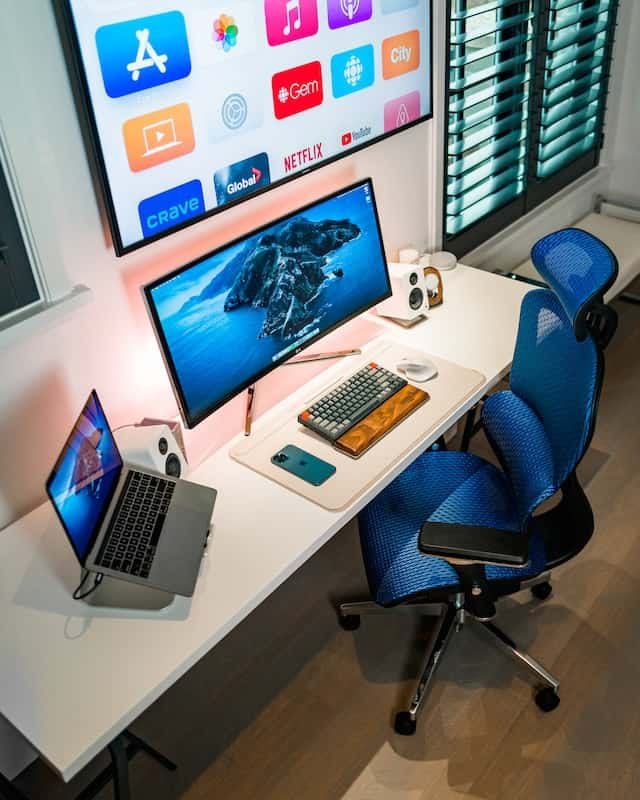
-
Desk
The desk is another essential piece of home office furniture, providing a surface for your computer, paperwork, and other materials. When choosing a desk, look for one that is sturdy and spacious enough to accommodate your work. The desk should be at a comfortable height, allowing you to type and use your mouse without straining your arms or shoulders. Ensure clearance for your knees, thighs, and feet under the desk. If the desk is too low, you can place sturdy boards or blocks under the desk legs. If the desk is too high, you can raise your chair or use a footrest to support your feet. When choosing home office furniture, it is essential to prioritise ergonomics. You can increase your comfort, productivity, and overall well-being by selecting furniture that promotes good posture and reduces strain.
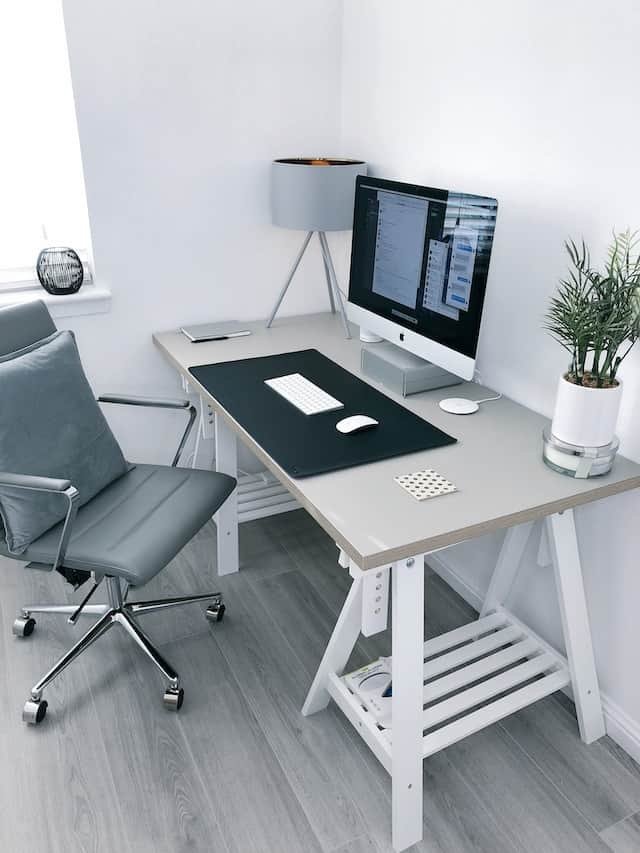
Functionality
When choosing home office furniture, functionality is an essential consideration. We want to ensure that our chosen furniture can meet our needs and help us stay organised and productive. Two key aspects of functionality to consider are storage and lighting.
-
Storage
Having adequate storage in a home office can significantly improve our ability to stay organised and work efficiently. When choosing furniture, we should look for ample storage options. This could include filing cabinets, bookcases, or shelving units. We may also consider desks with built-in storage, such as drawers or shelves.
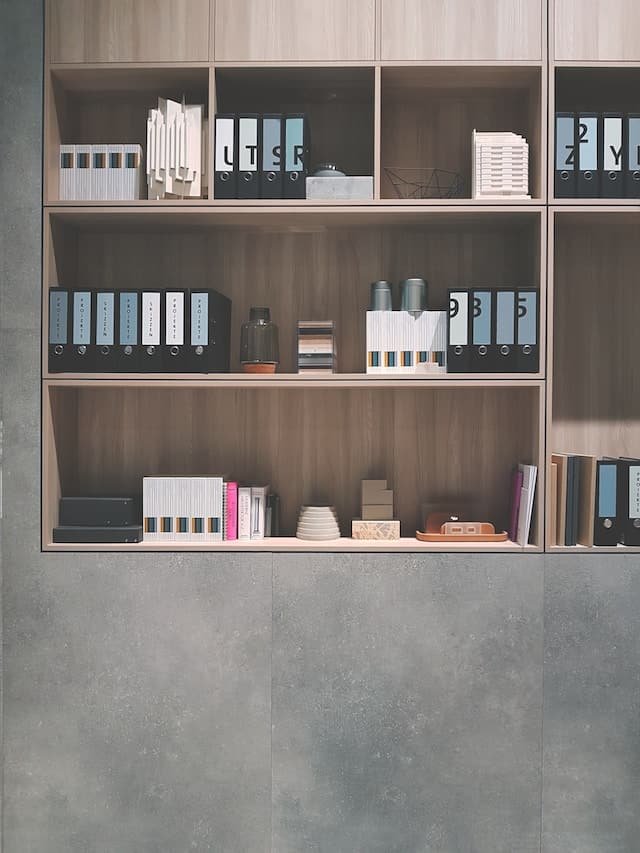
When selecting storage options, we should think about our specific needs. For example, if we work with many physical documents, we may want to prioritise filing cabinets or bookcases. We may want to focus on desk storage options if we primarily work on a computer. We should also consider the size of our office and choose furniture that fits comfortably without making the space feel cramped or cluttered.
-
Lighting
Lighting is another critical aspect of functionality to consider when choosing home office furniture. We want to ensure that our workspace is well-lit to reduce eye strain and improve productivity. When selecting furniture, we should consider natural and artificial lighting options. If our office has access to natural light, we should try to maximise it by positioning our desks near a window or choosing furniture that doesn’t block the light. We may also want to consider adding window treatments such as blinds or curtains to control the amount of light that enters the space.
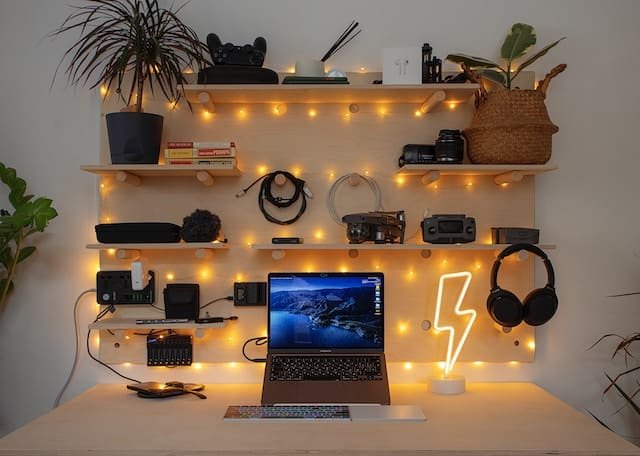
We should choose fixtures that provide adequate illumination for artificial lighting without causing glare or shadows. We may want to consider a combination of overhead lighting and task lighting, such as desk lamps. We should also consider the placement of our lighting fixtures and ensure they are positioned to provide even illumination throughout the space.
-
Aesthetics
When choosing home office furniture, aesthetics are crucial in creating a comfortable and inspiring workspace. Here are some things to consider:
-
Colour
The colour of your office furniture can impact your mood and productivity. For example, bright colours such as orange and yellow can stimulate creativity and energy, while blue and green can promote calmness and focus. However, it’s essential to choose a colour that you find appealing and matches the overall aesthetic of your home office.
-
Style
The furniture style should reflect your taste and the overall design of your home office. Consider furniture with clean lines and minimalistic designs if you prefer a modern look. Alternatively, if you prefer a more traditional look, opt for furniture with ornate details and classic shapes.
When choosing furniture, it’s important to balance aesthetics and functionality. While having good furniture is essential, selecting comfortable and practical pieces for your daily work routine is equally important.
Budget
When choosing home office furniture, budget is an important consideration. Before you start shopping, it’s essential to determine how much you’re willing to spend.
One way to save money is to look for second-hand furniture. Websites like Gumtree and eBay are great places to find pre-owned office furniture that is still in good condition. However, scrutinise the furniture before purchasing it to ensure that it is still in good condition and will meet your needs. If you’re buying new furniture, it’s important to remember that you tend to get what you pay for. While it may be tempting to choose the cheapest option, investing in higher-quality furniture can save you money in the long run. Higher-quality furniture will likely last longer and require less maintenance, so you won’t need to replace it as often.


